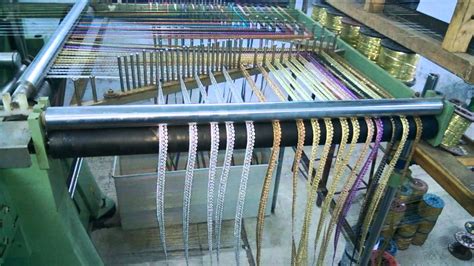India’s Lace Industry: A Global Powerhouse with 10,000+ Manufacturers
India stands as a global leader in lace manufacturing, boasting over 10,000 skilled manufacturers. This thriving industry contributes significantly to India’s textile exports, generating billions of dollars in revenue annually.

Key Regions and Types of Lace Produced
Lace manufacturing is primarily concentrated in Surat, Gujarat, known as the “Lace City of India.” Other major regions include Mumbai, Delhi, and Jaipur. These manufacturers produce a diverse range of lace, including:
- Chemical lace
- Leaver lace
- Raschel lace
- Bobbin lace
- Hand-made lace
Export Performance and Global Market Share
India’s lace exports have witnessed a remarkable growth in recent years. According to the Textile Export Promotion Council (TEXPROCIL), India exported lace worth $2.5 billion in 2021-2022, capturing a significant share of the global market. This growth is attributed to the country’s competitive pricing, skilled workforce, and advanced technology.
Innovation and New Applications
Lace manufacturers in India are constantly innovating to meet evolving customer demands. They are experimenting with new materials, such as bio-based lace made from bamboo or hemp, and developing new lace patterns and designs. Additionally, they are exploring niche applications for lace, such as:
- Smart lace for wearables and sensors
- Lace for architectural and interior design
- Lace for medical and healthcare products
Key Strategies for Lace Manufacturers
To succeed in the competitive global market, lace manufacturers in India are adopting various strategies:
- Focus on quality and innovation: Emphasize high-quality lace products that adhere to international standards and meet customer specifications.
- Leverage technology: Invest in state-of-the-art machinery and technology to enhance efficiency, reduce costs, and improve product quality.
- Explore new markets: Expand into new geographies and target specific customer segments to diversify revenue streams.
- Collaborate with fashion designers: Partner with designers to create exclusive lace collections and gain access to high-end fashion markets.
Pros and Cons of Sourcing Lace from India
Pros:
- Competitive pricing: India offers highly competitive prices for lace due to its low labor costs and economies of scale.
- Skilled workforce: India has a large pool of skilled lace manufacturers with decades of experience.
- Diverse product range: Indian lace manufacturers offer a wide variety of lace types, patterns, and designs to meet customer needs.
Cons:
- Quality control: Quality can vary among different manufacturers, so it is crucial to establish clear specifications and conduct thorough quality checks.
- Lead times: Production lead times can be longer compared to some other lace-producing countries.
- Intellectual property rights: Some manufacturers may not have strong intellectual property protection, making it important to safeguard designs.
Key Market Opportunities
The global lace market is projected to grow at a CAGR of 4.5% from 2023 to 2030, reaching a value of $23.5 billion by 2030. This growth is driven by increasing demand from the fashion, home decor, and medical industries. India is well-positioned to capitalize on these opportunities by:
- Targeting emerging markets: Expanding into fast-growing markets such as Southeast Asia, Africa, and Latin America.
- Focusing on niche applications: Exploring new applications for lace in healthcare, wearables, and interior design.
- Embracing sustainability: Developing eco-friendly lace products to meet the growing consumer demand for sustainable fashion.
Table 1: Top Lace Manufacturing Regions in India
| Region | Number of Manufacturers | Specialization |
|---|---|---|
| Surat, Gujarat | 7,000+ | Chemical lace, Leaver lace |
| Mumbai, Maharashtra | 2,000+ | Raschel lace |
| Delhi | 1,000+ | Bobbin lace, Hand-made lace |
| Jaipur, Rajasthan | 500+ | Embroidered lace, Metallic lace |
Table 2: Types of Lace Produced in India
| Type of Lace | Method of Production | Characteristics |
|---|---|---|
| Chemical lace | Machine-made | Delicate, lightweight, and intricate |
| Leaver lace | Machine-made | Fine and elegant, with intricate patterns |
| Raschel lace | Machine-made | Stretchable, durable, and versatile |
| Bobbin lace | Hand-made | Intricate and detailed, with unique designs |
| Hand-made lace | Hand-crafted | One-of-a-kind, with intricate and elaborate details |
Table 3: Strategies for Lace Manufacturers in India
| Strategy | Description |
|---|---|
| Focus on quality and innovation | Emphasize high-quality lace products that adhere to international standards and meet customer specifications. |
| Leverage technology | Invest in state-of-the-art machinery and technology to enhance efficiency, reduce costs, and improve product quality. |
| Explore new markets | Expand into new geographies and target specific customer segments to diversify revenue streams. |
| Collaborate with fashion designers | Partner with designers to create exclusive lace collections and gain access to high-end fashion markets. |
Table 4: Market Opportunities for Lace Manufacturers in India
| Opportunity | Growth Driver |
|---|---|
| Emerging markets | Increasing demand for lace from fast-growing economies. |
| Niche applications | New applications for lace in healthcare, wearables, and interior design. |
| Sustainability | Growing consumer demand for eco-friendly lace products. |
